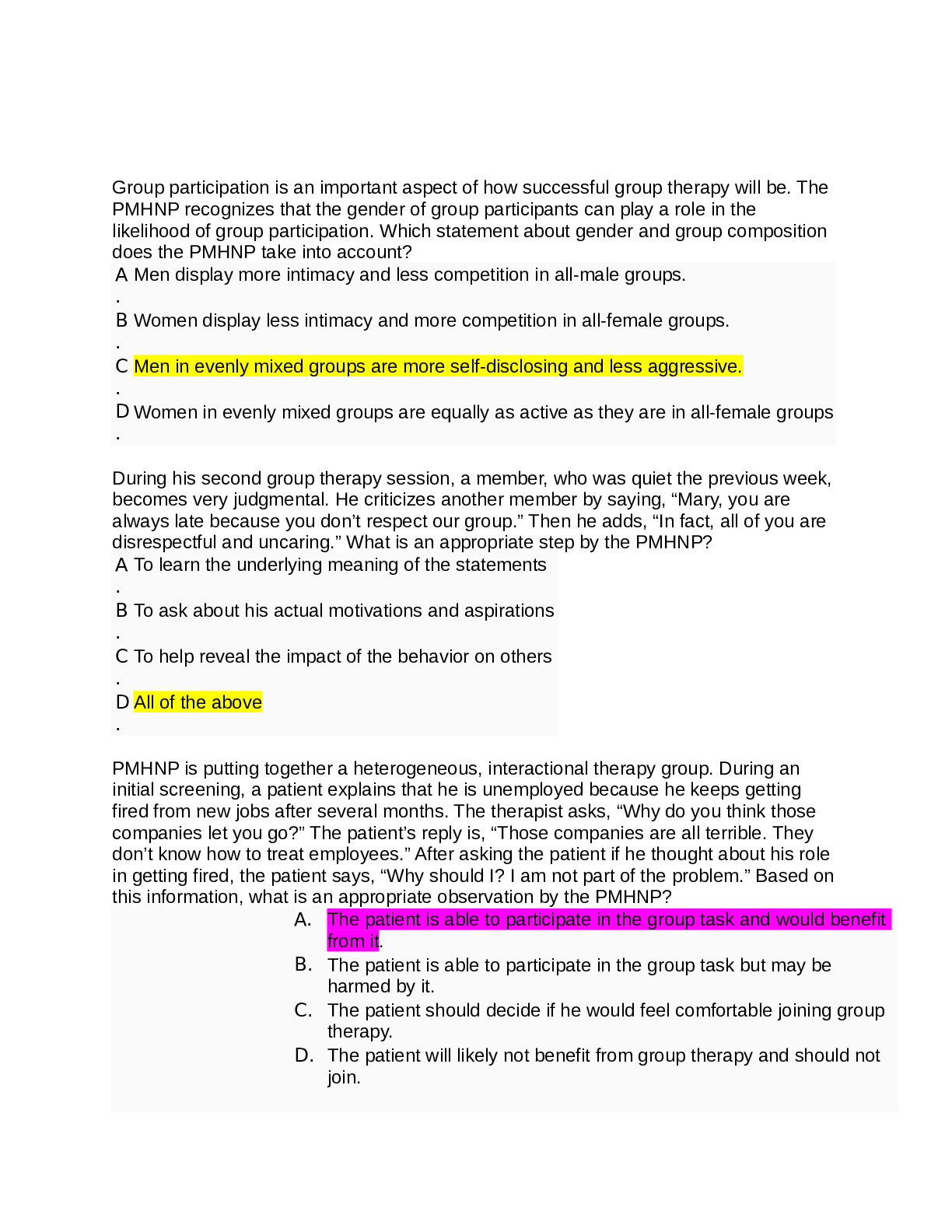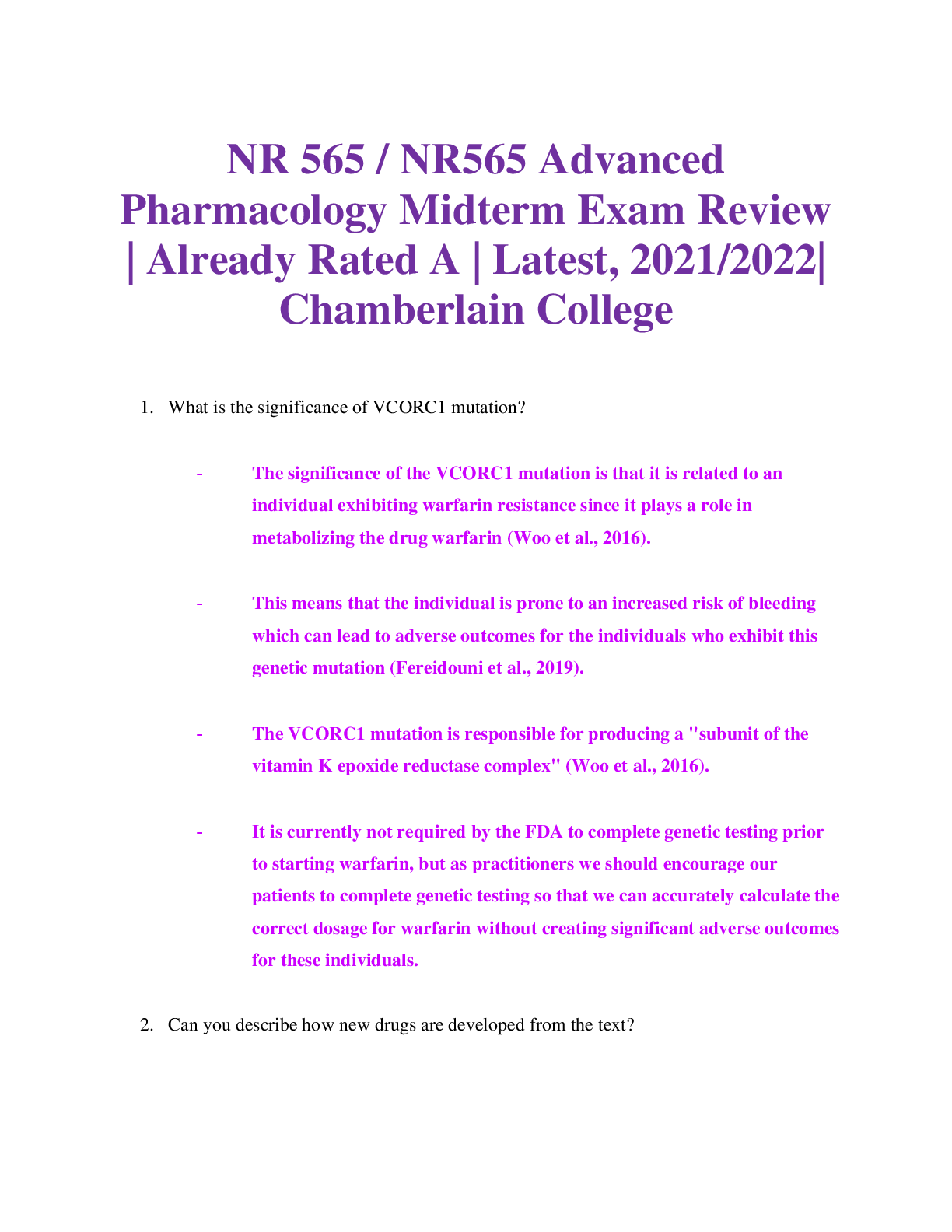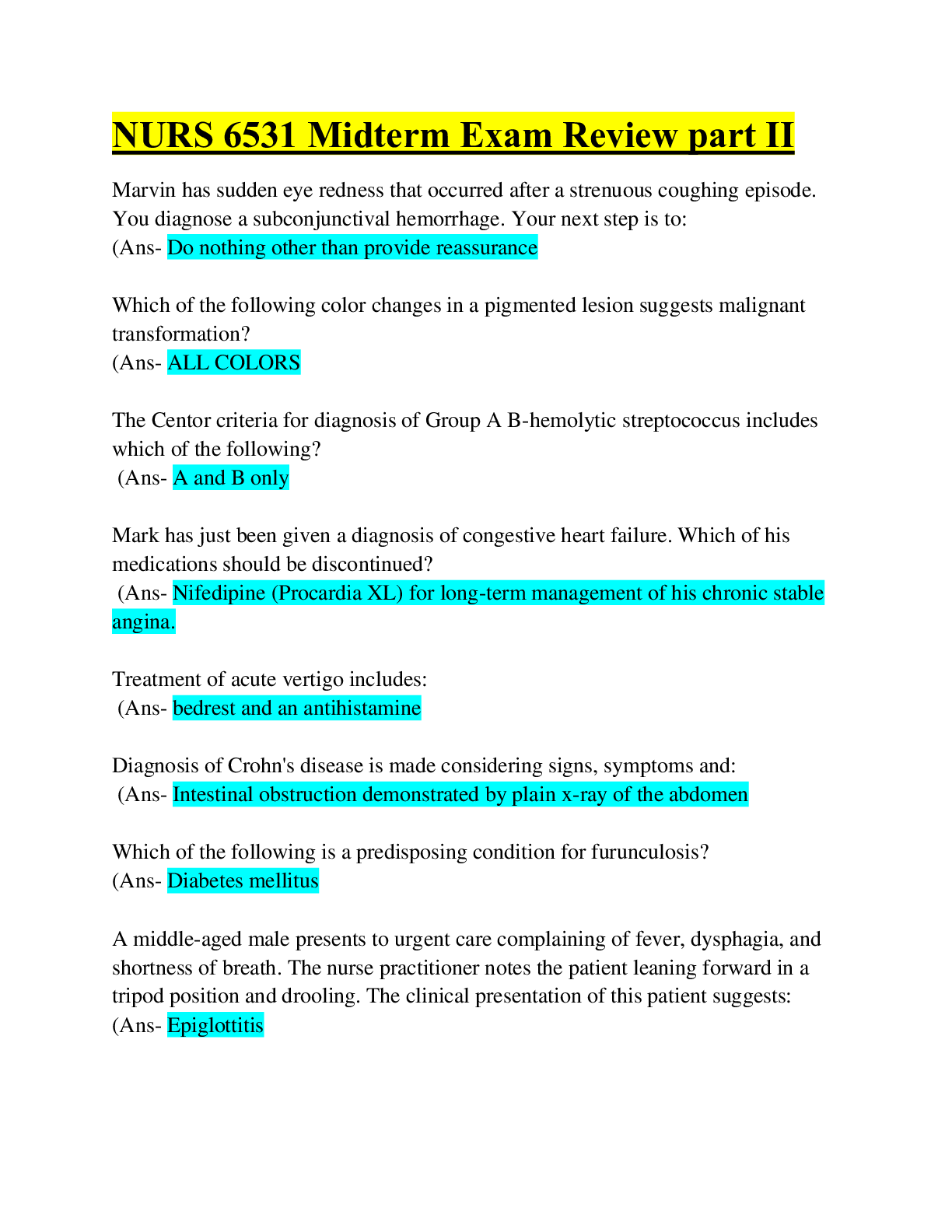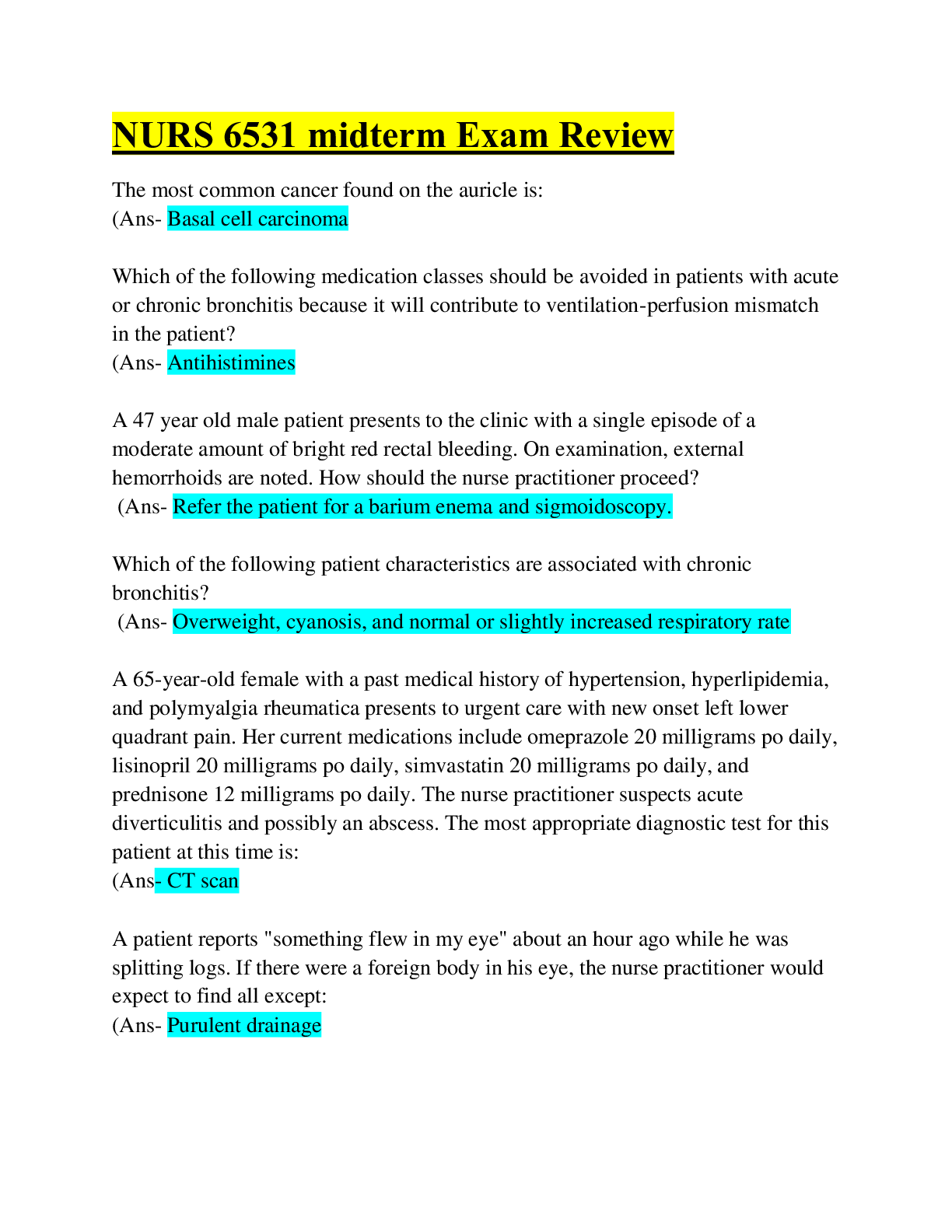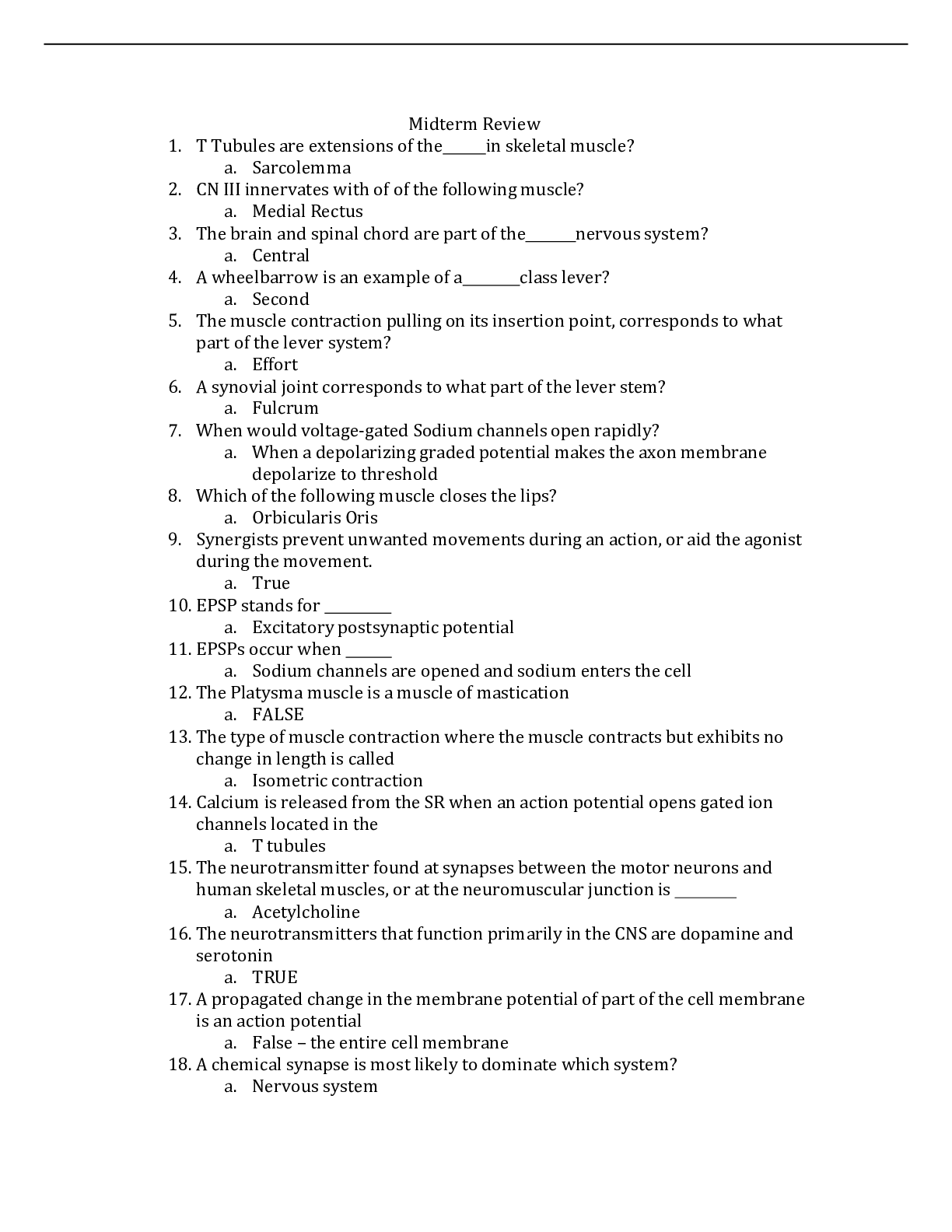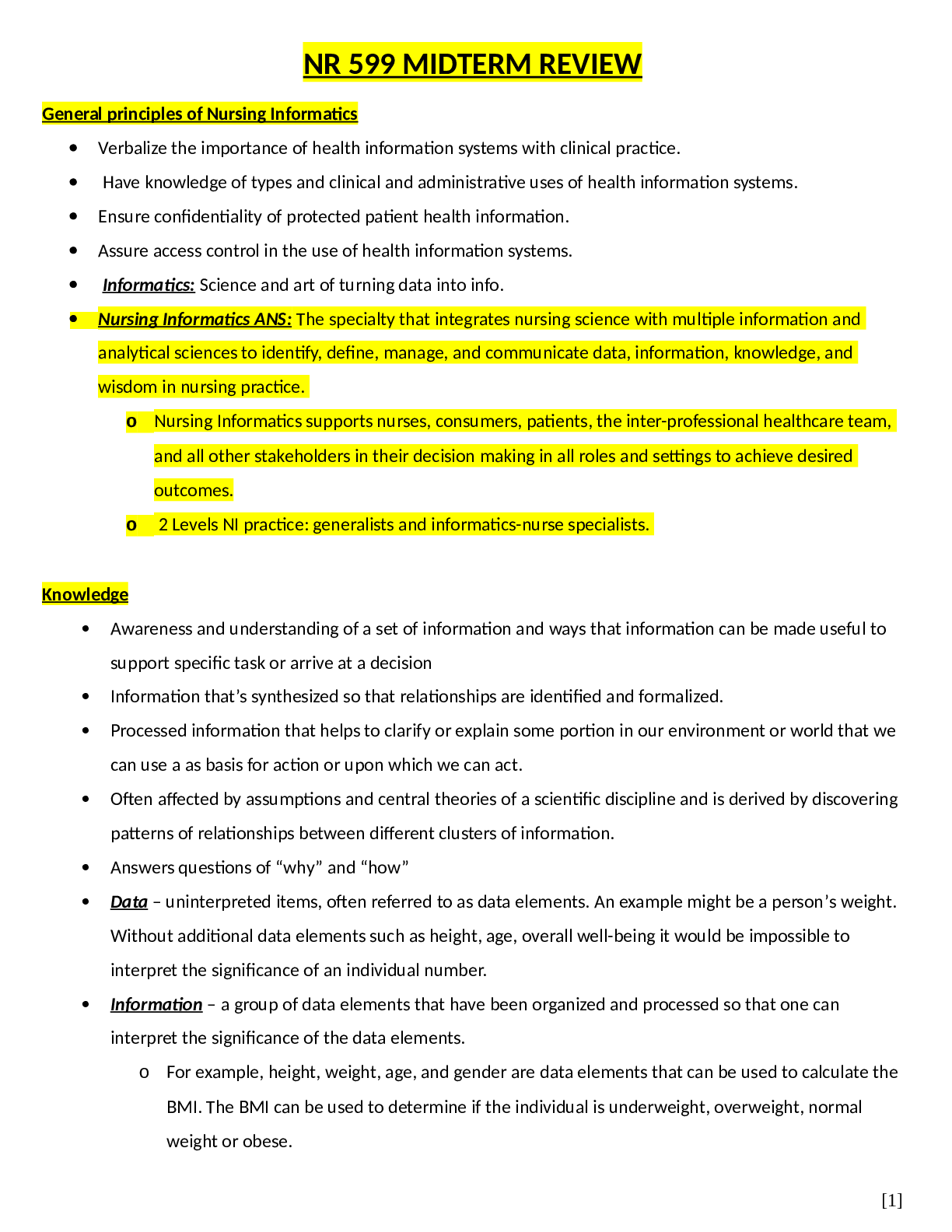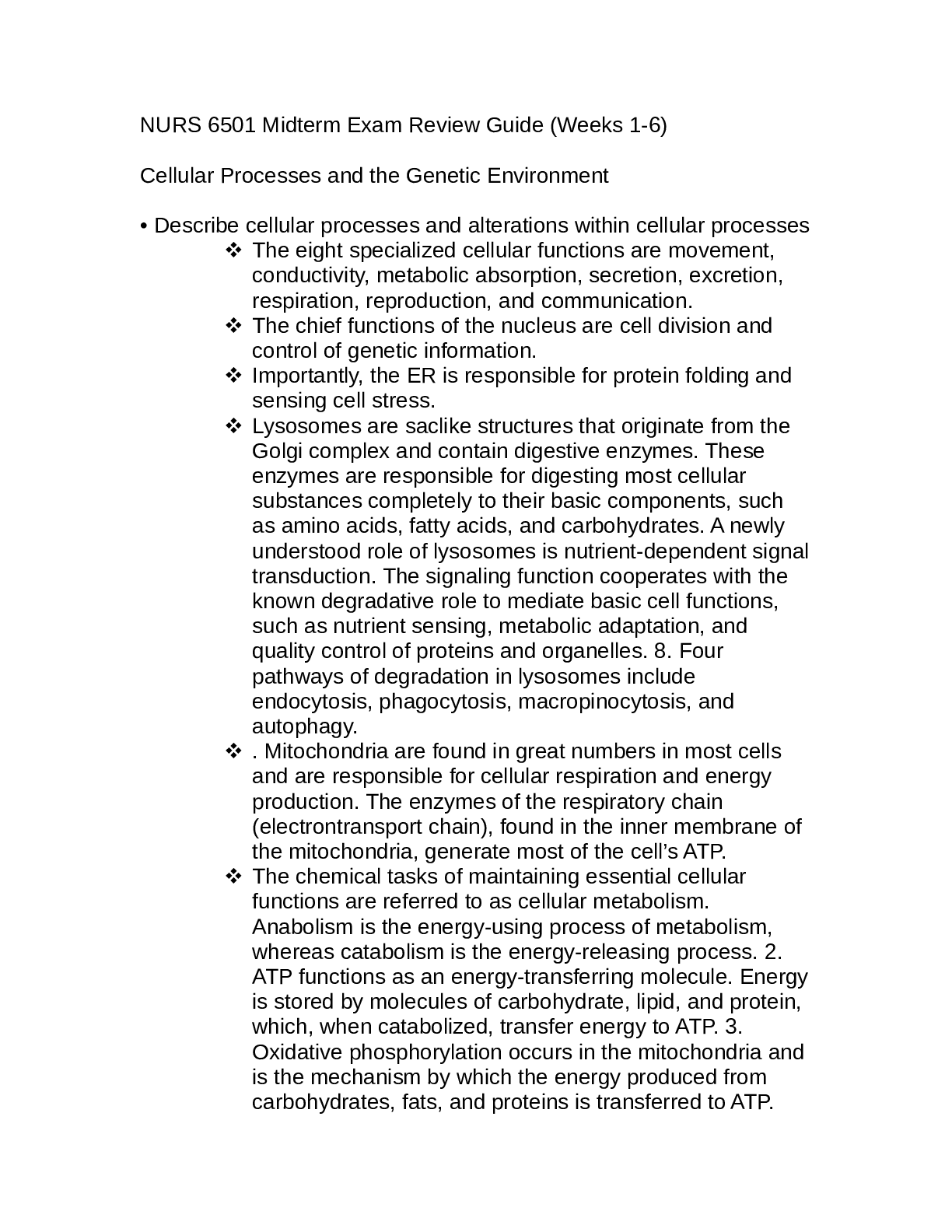*NURSING > EXAM REVIEW > NURS 6501 Midterm Exam Review Guide (Weeks 1-6. Compilation in 99 Pages) (All)
NURS 6501 Midterm Exam Review Guide (Weeks 1-6. Compilation in 99 Pages)
Document Content and Description Below
Nurs 6501 Midterm Exam Review Guide (Weeks 1-6) Cellular Processes and the Genetic Environment 1. Describe cellular processes and alterations within cellular processes. 2. What is the impact of t... he genetic environment on disease? 3. Explain how healthy cell activity contributes to good health and how its breakdown in cellular behavior and alterations to cells lead to health issues. 4. What are the roles genetics plays in disease processes? See answer for question 2. 5. What is the relationship of how cells are involved in disease processes? Altered Physiology 6. Evaluate cellular processes and alterations within cellular processes. 7. Analyze alterations in the immune system that result in disease processes. Type II (tissue-specific) hypersensitivity reactions are caused by five possible mechanisms: Type III (immune complex–mediated) hypersensitivity reactions are caused by the formation of Type IV (cell-mediated) hypersensitivity reactions are caused by either cytotoxic T lymphocytes SLE is a chronic, multisystem, inflammatory disease and is one of the most serious of the Hyperacute graft rejection (preexisting antibody) is immediate and rare, acute rejection is cell 8. Identify racial/ethnic variables that may impact physiological functioning. Will list these with individual disease processes. 9. What is the impact of patient characteristics on disorders and altered physiology? Will list with individual disease processes. 10. What is the association of genes in the development of disease? Genetic diseases caused by single genes usually follow autosomal dominant, autosomal recessive, or X-linked recessive modes of inheritance. Pedigree charts are an important tool in the analysis of modes of inheritance. 11. What is the process of immunosuppression and the effect it has on body systems? Disorders resulting from immune deficiency are the clinical sequelae (results) of impaired Concepts and Alterations of Cardiovascular and Respiratory Disorders 12. Common diseases and disorders that impact the Cardiovascular system, racial/ethnic variables, and patient characteristics. Varicose vein: refers to a condition in which venous blood has pooled, producing distortion of the veins, leakage, increased intravascular hydrostatic pressure, and inflammation (Fig. 33.1). DVT: Venous thromboembolism (VTE) includes deep venous thrombosis (DVT) and pulmonary embolism (PE). Superior vena cava syndrome (SVCS): is a clinical manifestation of progressive compression of the superior vena cava (SVC) that leads to venous distention in the upper extremities and head. Hypertension (HTN): is consistent elevation of systemic arterial blood pressure. Hypertension was defined in 2014 as a sustained systolic blood pressure Orthostatic (postural) hypotension (OH): refers to a decrease in systolic blood pressure of at least 20 mmHg or a decrease in diastolic blood pressure of at least 10 mmHg within 3 minutes of Aneurysm: is a localized dilation or outpouching of a vessel wall or cardiac chamber. Laplace's law can provide an understanding of the hemodynamics of an aneurysm. True aneurysms involve Thromboangiitis obliterans (Buerger disease): is an idiopathic autoimmune condition strongly Raynaud phenomenon and Raynaud disease: are characterized by attacks of vasospasm in the small arteries and arterioles of the fingers and, less commonly, the toes. Although the clinical Atherosclerosis: is a form of arteriosclerosis in which thickening and hardening of the vessel are caused by the accumulation of lipid-laden macrophages within the arterial wall, which leads to Peripheral artery disease (PAD): refers to atherosclerotic disease of arteries that perfuses the limbs, especially the lower extremities. PAD affects 10% to 15% of those who are 60 years of age or older, and is associated with significant morbidity and mortality. Coronary Artery Disease: The lowest prevalence among Asian Americans and the highest among native Hawaiians or other Pacific Islanders. NonHispanic whites and blacks have approximately Transient Myocardial Ischemia: CAD can diminish the myocardial blood supply causing ischemia. Stable Angina: Angina pectoris is chest pain caused by myocardial ischemia. Stable angina is caused by gradual luminal narrowing and hardening of the arterial walls, so that affected vessels Prinzmetal Angina: Prinzmetal angina (also called variant angina) is chest pain attributable to Silent Ischemia and Mental Stress (Induced Ischemia): Myocardial ischemia does not always cause angina and may be associated only with nonspecific symptoms such as fatigue, dyspnea, or feeling of unease. Acute Coronary Syndromes: When there is sudden coronary obstruction caused by thrombus [Show More]
Last updated: 1 month ago
Preview 1 out of 99 pages

Reviews( 2 )

by strongkm · 3 years ago
Most welcome by SuperSolutions©. 3 years ago

by SuperSolutions© · 3 years ago
Document information
Connected school, study & course
About the document
Uploaded On
Nov 24, 2020
Number of pages
99
Written in
Additional information
This document has been written for:
Uploaded
Nov 24, 2020
Downloads
6
Views
280



.png)

